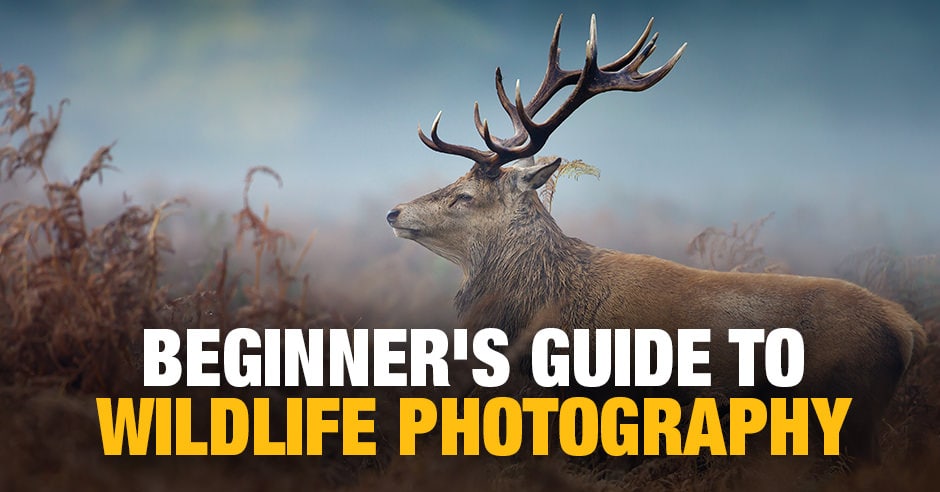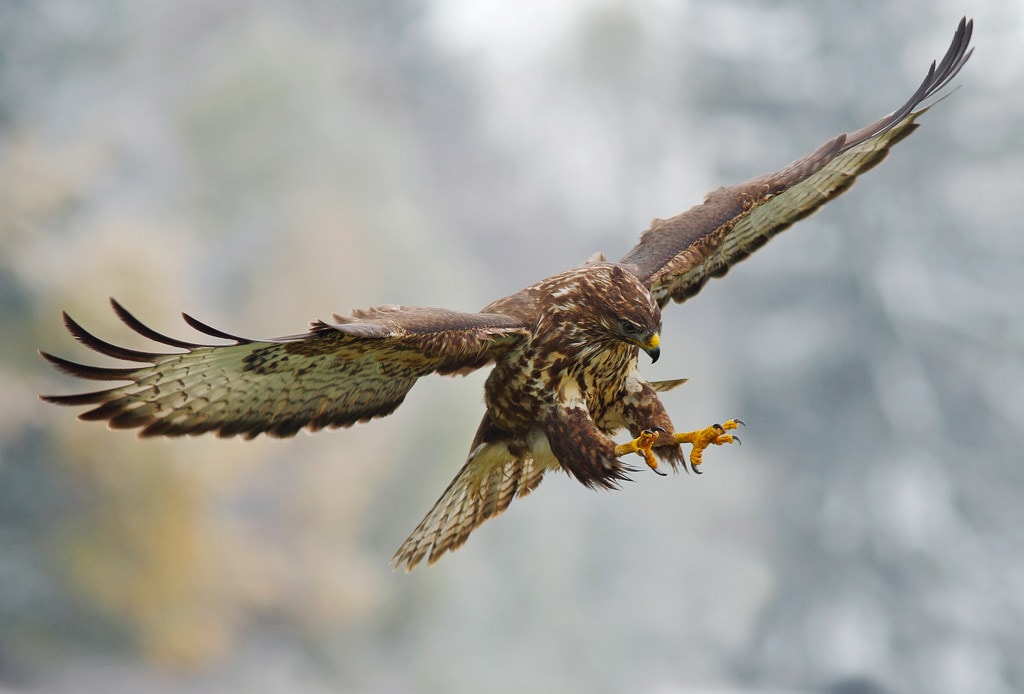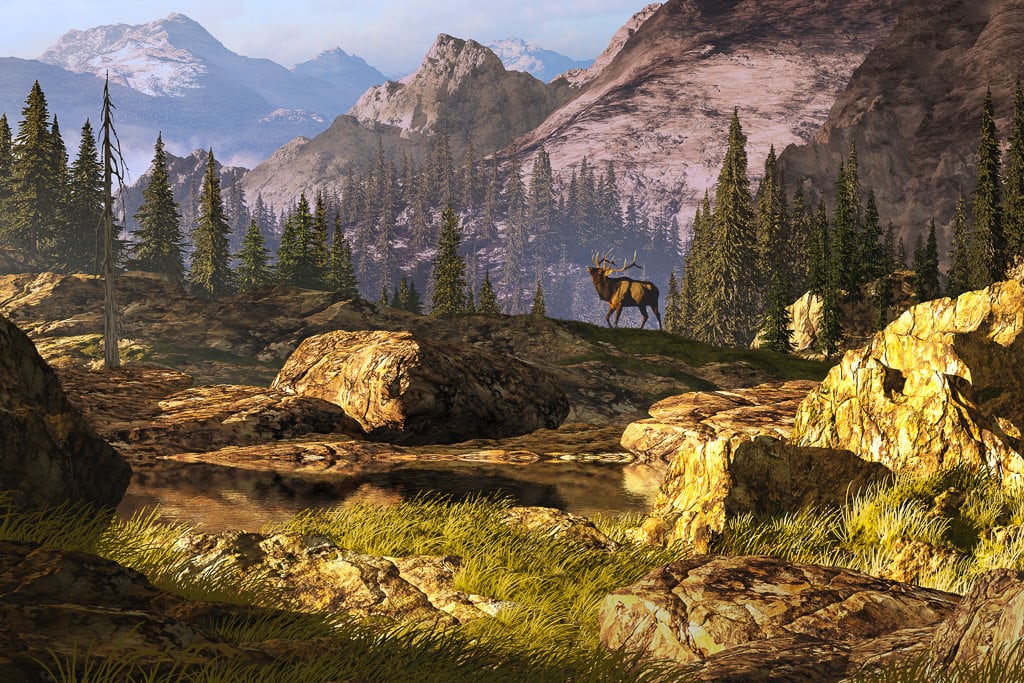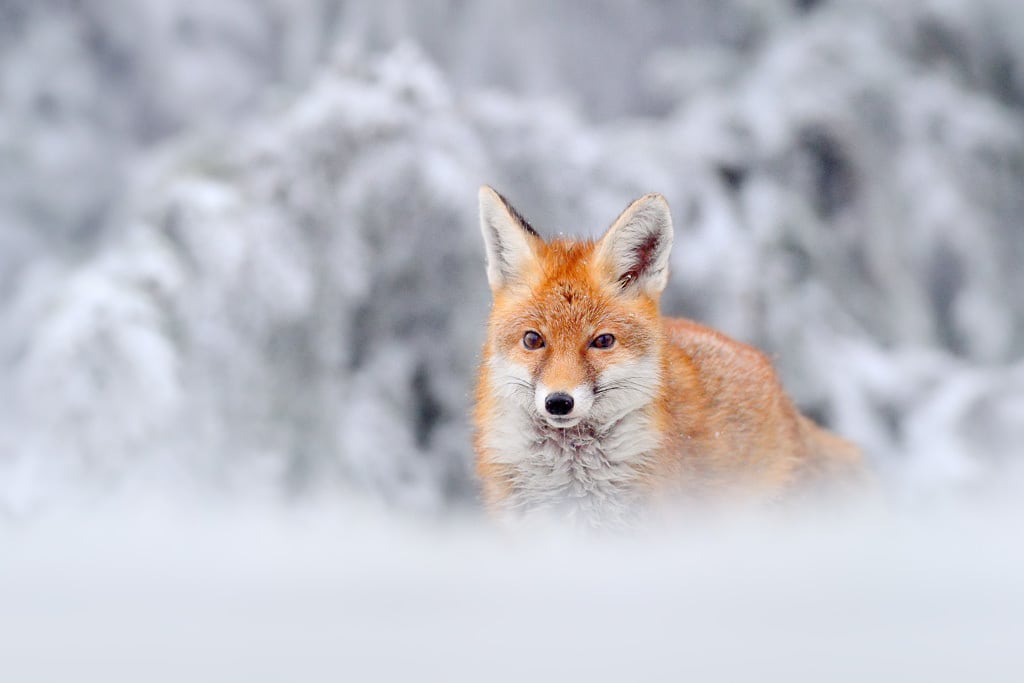Wildlife photography is one of the most exciting photographic genres out there. But it can be difficult to get started as a wildlife photographer because of all the gear, technical know-how, and additional knowledge required.

That’s what this article is all about. You’re
going to discover all the basics you need to get started in wildlife
photography–so you can get started taking gorgeous wildlife shots as soon as
possible.
Sound good?
Let’s dive right in.
What is Wildlife Photography?
Wildlife photography is a popular genre of photography done by beginners, enthusiasts, and professionals alike. It involves shooting any type of animal (from birds to insects to butterflies to mammals). But wildlife photographers most commonly photograph mammals, reptiles, amphibians, and birds.

And that’s what I’ll focus on in this article. If you like to photograph insects, you can still call yourself a wildlife photographer. But I recommend you check out a macro photography tutorial instead, where the needs of insect photographers are catered to.
See also: Wildlife Photography Tutorials
Note that wildlife photos don’t have to depict
animals that are truly “wild.” You can photograph animals in a zoo, and plenty
of viewers will still call it wildlife photography. But there is an ongoing
debate among wildlife photographers about whether photographing captive animals
is acceptable, and so it’s for you to determine where you draw the line.
Why Wildlife Photography?
What makes wildlife photography special?
1. Appreciating Nature
First of all, photographing wildlife helps you connect with and appreciate nature. That’s what draws many wildlife photographers in the first place–they love wildlife, nature, and want to spend time capturing its beauty.
2. Helping the Planet
Wildlife photography can also be valuable for
conservation purposes. By sharing your wildlife photos, you can portray the
beauty of nature. And you can convey messages about the importance of
maintaining habitats for your favorite creatures.
3. Feeling a Thrill
Finally, photographing wild animals involves a fun challenge. You may spend hours waiting and watching, with no real action. Then, just before the light fades, you get an amazing opportunity–one that comes with an incredible thrill.
Types of Wildlife Photography
There are three broad types of wildlife
photography, though plenty of wildlife photographers participate in all of
them:
1. Mammal Photography
First, mammals are what most people think of
when you talk about wildlife, and so mammal photography is closely associated
with wildlife photographers. This category includes a lot of the classic
wildlife subjects: polar bears, black/brown bears, wolves, bison, elk, deer,
lions, tigers, etc.

2. Bird Photography
Second, bird photography has quite a few
devotees, many of whom confine themselves solely to birds. Because birds are so
small and fast, bird photography often involves the most expensive equipment (and
a lot of frustration in the field!).

3. Underwater Photography
Third, underwater photography is a less talked about but still impressive subgenre of wildlife photography. Photographers like Paul Nicklen capture gorgeous photos of orcas, sharks, seals, penguins, and more.

Main Challenges of Wildlife
Photography
Photographing wildlife can be tricky for a few key reasons.
1. Getting Close to Wildlife
In order to capture beautiful photos of
wildlife, you have to be close.
Really, really close.
It’s a common misconception that super telephoto lenses (lenses with focal lengths of 400mm, 500mm, 600mm, and even 800mm) will get you incredibly close to your subject. But the truth is that even the longest lenses still require some pretty significant skill on your part because most animals are skittish, and you have to find a way to close the distance.

This is the biggest challenge that wildlife
photographers face. Therefore, getting close is the number one concern of the
wildlife photographer; it involves several key considerations, including
getting close physically (by stalking, using a blind, etc.) and getting close
optically (with a camera/lens combination).
2. Finding Wildlife to Photograph
Even if you have the skills necessary to get
close to wildlife, you won’t capture a single photograph if you can’t find
wildlife to shoot!
Fortunately, it’s possible to find wildlife in most areas. But you do have to be patient, and you have to know where to look.
See also: Best Lens for Bird Photography
One of the easiest ways to get started with photographing wildlife is at a local park or preserve. Depending on your location, you may be able to capture some very cool wildlife just minutes from your house.
If you’re struggling to find wildlife near
you, I recommend contacting some local park rangers or naturalists. They should
be able to direct you toward some good habitat in your area, even if you think
there is none!

3. Working With the Available Light
Wildlife photography generally happens out in nature, where you can’t bring your off-camera flashes, and your on-camera flashes are often too weak to illuminate wildlife from a distance.
See also: Best Camera for Wildlife Photography
So you’re often stuck dealing with the
available light.
Add to that the fact that most wildlife is
active around dawn and dusk…
…and you’ve got yourself a problem.
This is why wildlife photographers use the fastest lenses they can afford and why photographing wildlife is so frequently frustrating.
Related: How and When to Use Fast Shutter Speed
The key is take failure in stride. You’ll have
plenty of bad days–but the good days will make it all worth it.
4. Dealing With Tricky Conditions
Some of the best wildlife shots are taken in
adverse conditions: wind, rain, snow, sleet, you name it.
And if you want to capture memorable images, you’ll probably want to brave the conditions, too.
See also: Wildlife Photography on a Budget
But this can be tough. Trekking through a snowstorm can be physically demanding, not to mention dangerous for your camera gear (and you!). So you have to be prepared, and you have to be determined!

How to Start With Wildlife
Photography
If you’re looking to get into wildlife photography, you’ll want to start by getting the required gear. I don’t recommend you start off with a super telephoto lens and high end camera, but you should look for a DSLR or a mirrorless option and aim for a lens that offers at least 300mm on the long end (and 400mm is better).
Note that wildlife photography is one of the genres where an APS-C camera is a great choice, because the crop-factor will give you extra reach.
Once you have a decent camera and long lens, it’s time to get out and start shooting. As mentioned above, a local nature preserve or park is great for getting your bearings and practicing with your equipment. I recommend you practice stalking, where you slowly get close to animals (without causing them stress).
See also: Best Settings For Wildlife Photography
You might also consider visiting local animal
sanctuaries, where you can photograph wildlife in relatively calm situations.
Over time, you’ll build up confidence, and you can start to go on expeditions that are farther away and take more planning, skill, and effort.
See also: Best Lens for Wildlife Photography
But always remember that plenty of great shots
are available nearby–maybe even in your own backyard!
Wildlife Photography | Conclusion
Wildlife photography is a challenge but also a lot of fun. If you’re looking to get started as a natural photographer, just remember the wildlife photography tips I’ve given you, get out, and start practicing!

